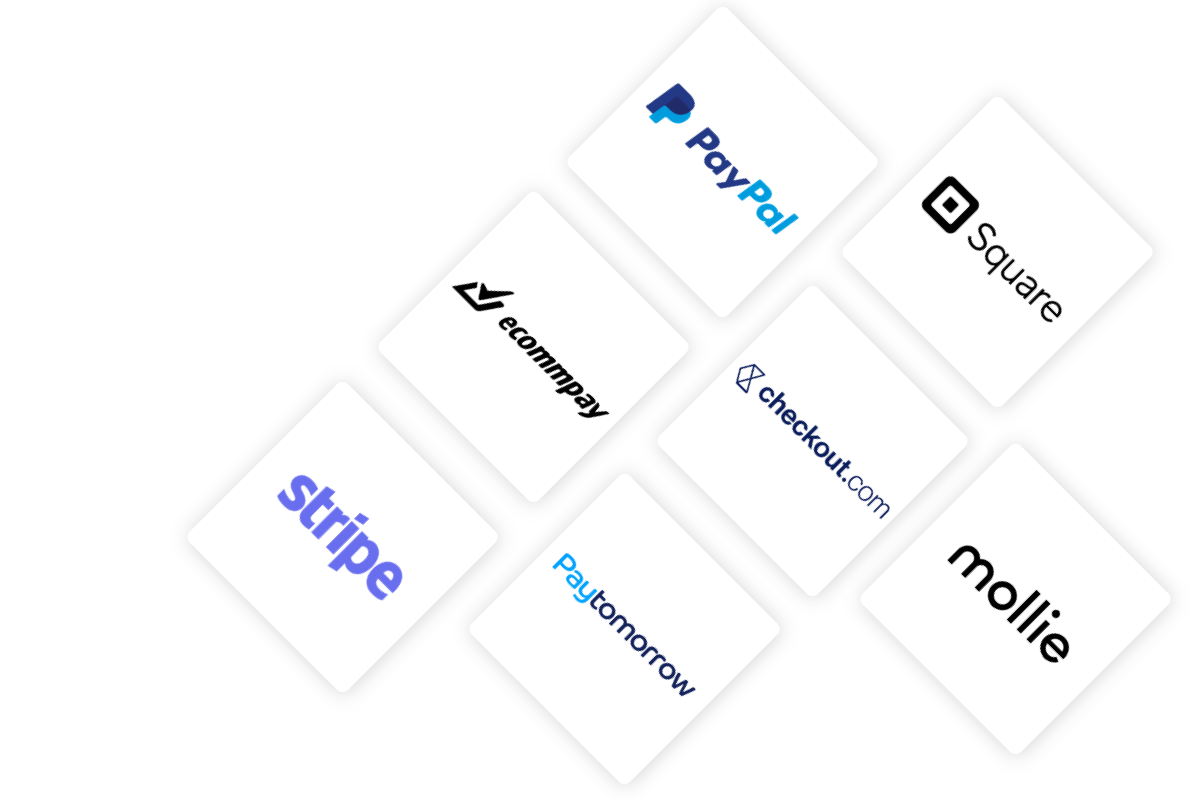Our Payment Links are different
Use your Payment Gateway
Use Multiple Payment Gateways/Methods
Not tied to any product, invoice or amount

Pre-authorize, capture payment or save a card
Say Goodbye to Late Payments: How Payment Links Can Help Electricians Get Paid Faster
Introduction: The Problem of Late Payments in the Electrical Industry
Late payments are a common issue in the electrical industry, and they can have a significant negative impact on electricians’ businesses. Many electricians face the challenge of waiting for weeks or even months to receive payment for their services, which can cause cash flow problems and hinder business growth. Late payments can also lead to frustration and stress for electricians, who rely on timely payments to cover their expenses and support their livelihoods.
The Benefits of Payment Links for Electricians
Payment links offer a solution to the problem of late payments in the electrical industry. By providing a convenient and secure way for clients to make payments, electricians can get paid faster and improve their cash flow. Payment links allow electricians to send invoices with a clickable link that takes clients directly to a payment page, where they can easily make a payment using their preferred method.
The convenience and ease of use of payment links benefit both electricians and their clients. Electricians can save time and effort by eliminating the need to manually process payments or chase clients for payment. Clients, on the other hand, can make payments quickly and easily, without the hassle of writing cheques or making bank transfers. Payment links also provide a level of security and reliability, as they are typically hosted on secure payment platforms that protect sensitive financial information.
How Payment Links Work: A Step-by-Step Guide
Payment links work by providing a direct and convenient way for clients to make payments. Here is a step-by-step guide on how payment links work:
1. Create an invoice: Electricians create an invoice as they normally would, including all the necessary details such as the client’s name, the services provided, and the amount owed.
2. Generate a payment link: Once the invoice is ready, electricians can generate a payment link using their chosen payment link provider. This link is unique to each invoice and allows clients to make a payment directly.
3. Send the invoice with the payment link: Electricians can send the invoice to their clients via email or any other preferred method. The invoice should include clear instructions on how to make a payment using the payment link.
4. Client makes a payment: When the client receives the invoice, they can click on the payment link, which will take them to a secure payment page. The client can then enter their payment details and complete the transaction.
5. Receive payment: Once the client has made the payment, the electrician will receive a notification confirming the successful transaction. The payment will be deposited into the electrician’s chosen bank account.
Choosing the Right Payment Link Provider for Your Business
When choosing a payment link provider for your business, there are several factors to consider. First and foremost, you should ensure that the provider offers a secure and reliable payment platform. Look for providers that use encryption technology to protect sensitive financial information and have a proven track record of providing secure payment solutions.
It is also important to consider the fees associated with using a payment link provider. Some providers charge a flat fee per transaction, while others may charge a percentage of the transaction amount. Consider your business volume and transaction frequency to determine which pricing structure is most cost-effective for your needs.
Integration with your existing invoicing system is another important factor to consider. Look for payment link providers that offer seamless integration with popular invoicing software or provide their own invoicing tools. This will make it easier to generate payment links and streamline your invoicing process.
Lastly, consider the level of customer support provided by the payment link provider. Look for providers that offer responsive customer support and have a reputation for providing excellent service. This will ensure that you have assistance if any issues or questions arise during the implementation and use of payment links.
Integrating Payment Links into Your Invoicing Process
Integrating payment links into your invoicing process can help streamline your business operations and make the payment process more efficient. Here are some steps to follow when integrating payment links into your invoicing process:
1. Choose a payment link provider: Select a payment link provider that meets your business needs and offers the features and functionality you require. Consider factors such as security, pricing, integration options, and customer support.
2. Set up your account: Once you have chosen a payment link provider, set up your account by providing the necessary information and linking it to your bank account. This will allow you to receive payments directly into your chosen bank account.
3. Generate payment links: When creating an invoice, use the payment link provider’s tools or software to generate a unique payment link for each invoice. This link should be included in the invoice and clearly communicated to the client.
4. Send invoices with payment links: Send the invoices to your clients via email or any other preferred method. Make sure to include clear instructions on how to make a payment using the payment link.
5. Track payments: Use the payment link provider’s dashboard or reporting tools to track payments and monitor your cash flow. This will help you stay on top of your finances and ensure that all payments are received in a timely manner.
Communicating Payment Links to Your Clients: Best Practices
When communicating payment links to your clients, it is important to follow best practices to ensure that they understand the payment process and feel comfortable using payment links. Here are some tips for effectively communicating payment links to your clients:
1. Provide clear instructions: Clearly explain how to make a payment using the payment link, including any necessary steps or information required. Use simple and concise language to avoid confusion.
2. Offer multiple payment options: While payment links provide a convenient way to make payments, some clients may prefer alternative methods such as bank transfers or cheques. Offer multiple payment options to accommodate different preferences.
3. Highlight the security of payment links: Assure your clients that payment links are secure and that their financial information will be protected. Explain the encryption technology used by the payment link provider to give them peace of mind.
4. Follow up with reminders: If a client has not made a payment after a certain period of time, send a friendly reminder with the payment link included. This will help ensure that payments are made in a timely manner.
Tracking Payments and Managing Cash Flow with Payment Links
Payment links can greatly assist electricians in tracking payments and managing cash flow. By using a payment link provider’s reporting tools or dashboard, electricians can easily track which invoices have been paid and which are still outstanding. This allows for better financial planning and helps electricians stay on top of their cash flow.
The streamlined payment process provided by payment links also helps electricians manage their cash flow more effectively. With faster payments, electricians can ensure that they have the necessary funds to cover their expenses and invest in their business growth. This can lead to increased profitability and a more stable financial position.
Overcoming Common Challenges with Payment Links
While payment links offer many benefits, there can be some challenges associated with their use. One common challenge is ensuring that clients are comfortable using payment links and understand the process. To overcome this challenge, electricians should provide clear instructions and offer support if clients have any questions or concerns.
Another challenge is ensuring that payment links are integrated seamlessly into the invoicing process. Electricians should choose a payment link provider that offers easy integration with their existing invoicing software or provides their own invoicing tools. This will help streamline the process and minimize any potential issues or disruptions.
Case Studies: Electricians Who Have Successfully Used Payment Links
There are many electricians who have successfully used payment links to improve their businesses and get paid faster. One example is John, an electrician who used to struggle with late payments and cash flow problems. After implementing payment links into his invoicing process, John noticed a significant improvement in his cash flow and was able to grow his business more effectively.
Another example is Sarah, a self-employed electrician who used payment links to streamline her payment process. Sarah found that using payment links saved her time and effort, as she no longer had to manually process payments or chase clients for payment. This allowed her to focus on providing quality service to her clients and growing her business.
Conclusion: Embracing Payment Links for a More Efficient and Profitable Business
In conclusion, payment links offer a solution to the problem of late payments in the electrical industry. By providing a convenient and secure way for clients to make payments, electricians can get paid faster and improve their cash flow. Payment links are easy to use, offer security and reliability, and can be seamlessly integrated into the invoicing process.
Electricians should carefully choose a payment link provider that meets their business needs and offers the necessary features and functionality. By effectively communicating payment links to clients and following best practices, electricians can ensure that clients understand the payment process and feel comfortable using payment links.
By embracing payment links, electricians can streamline their payment process, track payments more effectively, and manage their cash flow with greater efficiency. This can lead to a more profitable and successful business, allowing electricians to focus on what they do best – providing quality electrical services to their clients.


